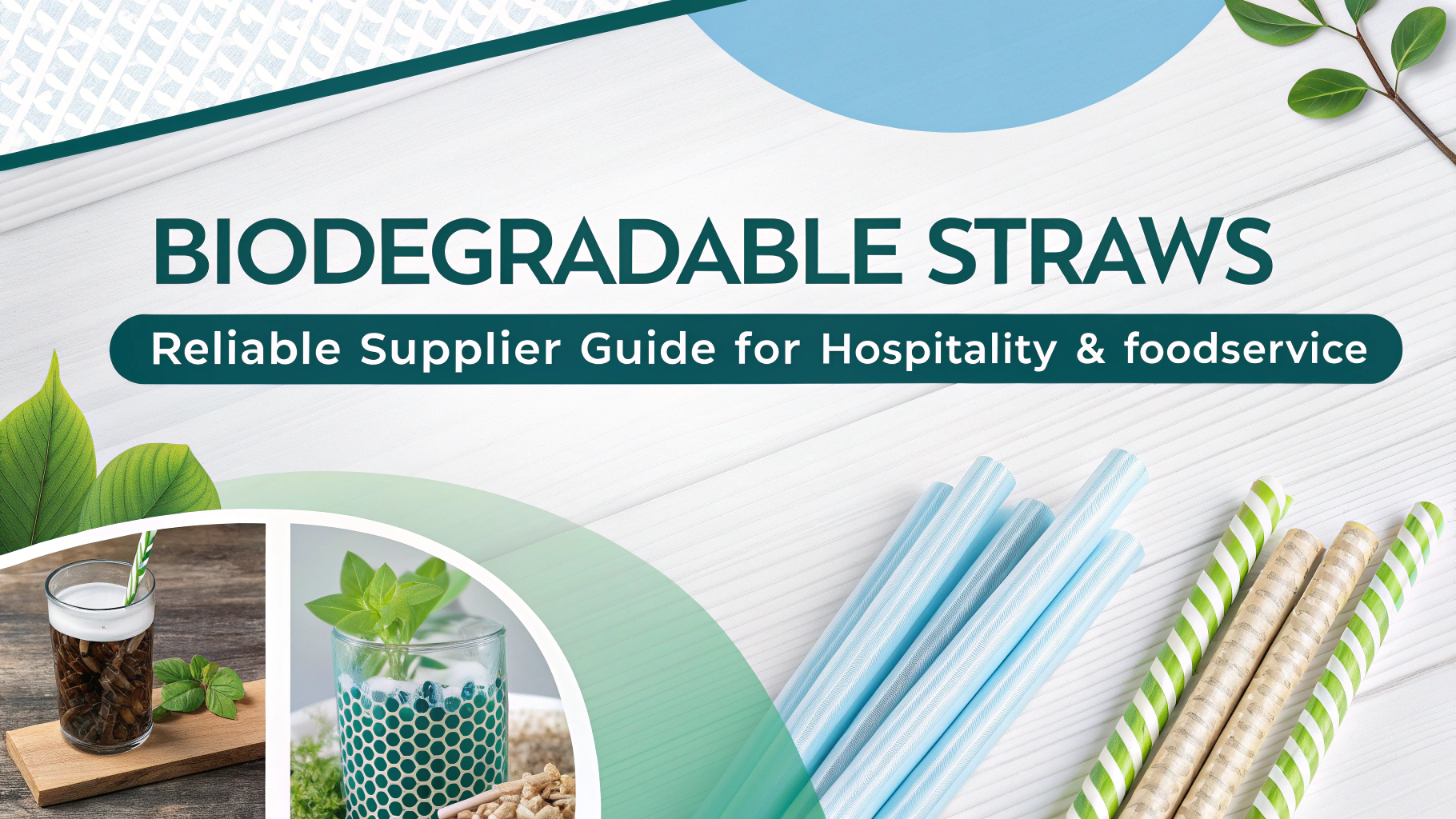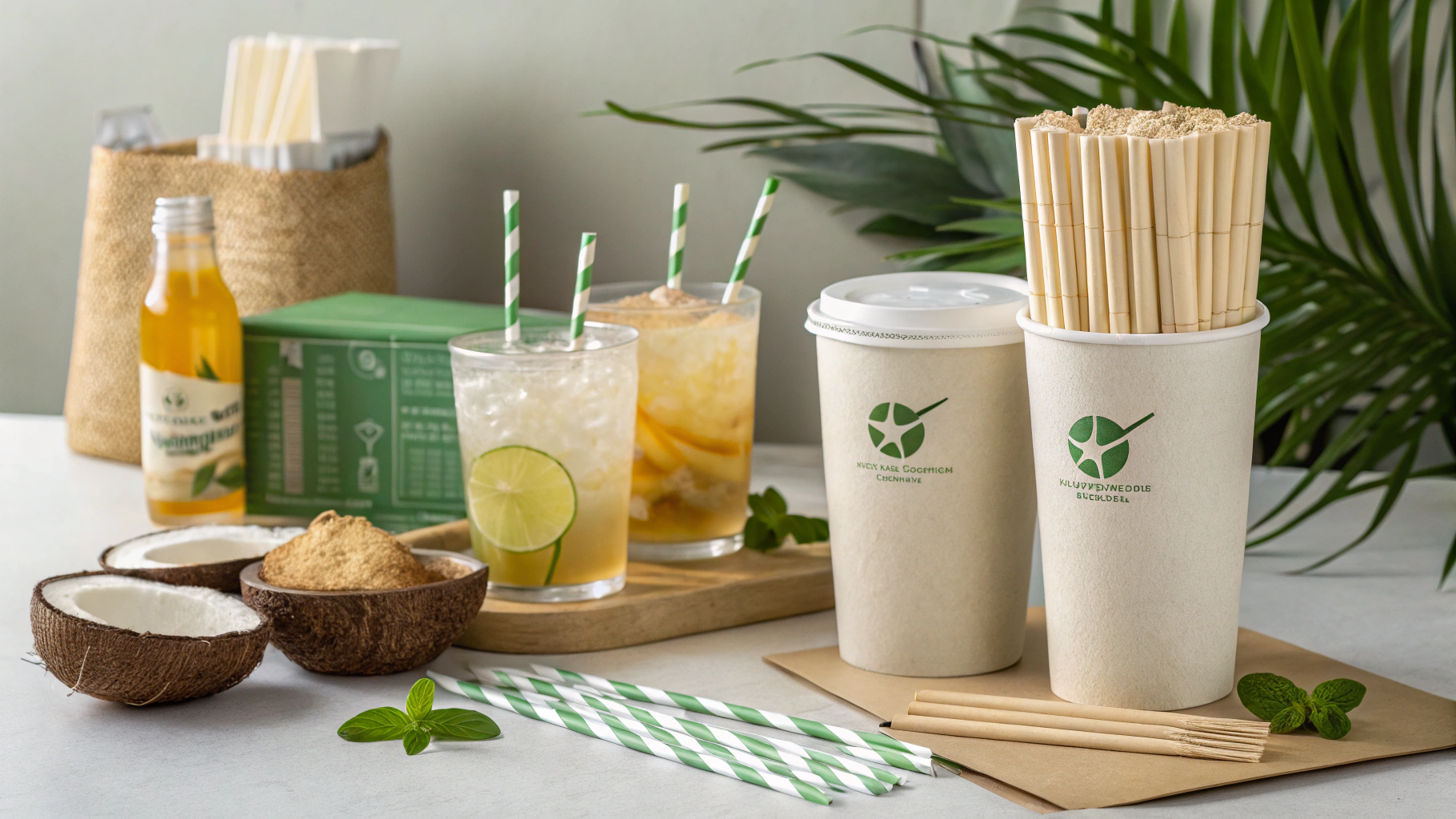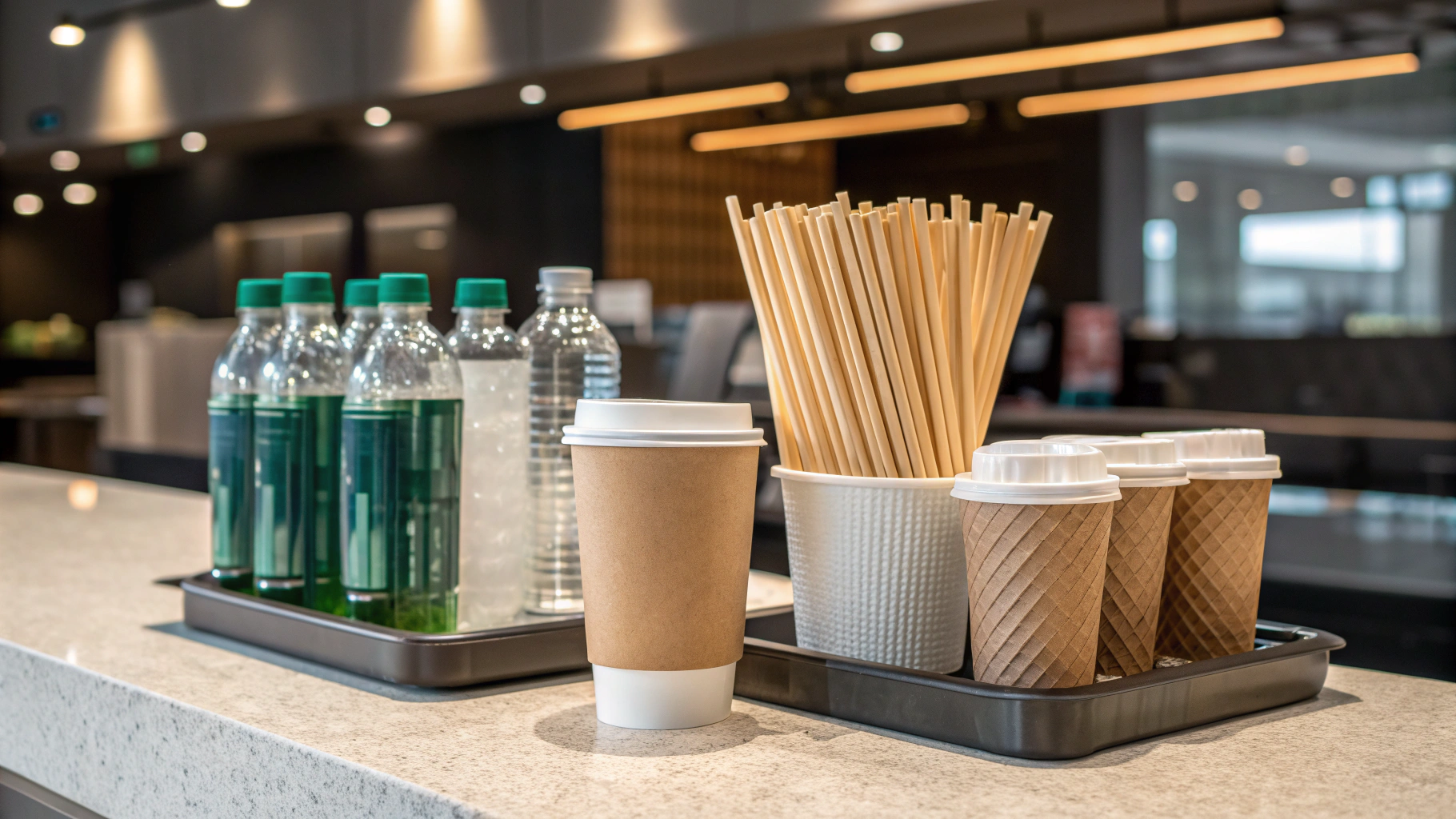For procurement managers, operations directors, sustainability officers, and supply chain executives, seemingly minor details can often hold significant operational and commercial leverage. Consider the humble drinking straw. Far from a simple accessory, its evolution from ancient Sumerian beer sippers to a modern symbol of environmental debate underscores its unexpected complexity. Today, the choice of a straw—particularly its diameter—is a high-stakes decision impacting customer experience, regulatory compliance, cost efficiencies, and, ultimately, your brand’s reputation. Ignoring these nuances can lead to operational bottlenecks, increased waste, and reputational damage in a market increasingly scrutinizing every aspect of sustainability.
Historically, the straw has been a testament to human ingenuity. Over 5,000 years ago, Sumerians crafted elaborate gold and lapis lazuli tubes to enjoy beer, avoiding the fermented solids. Fast forward to 1888, American inventor Marvin Stone, frustrated by the grassy taste of natural rye straws in his mint julep, patented the modern paper straw – an 8.5-inch marvel with a narrow bore, designed specifically to prevent lemon seeds from clogging. The mid-20th century saw the widespread adoption of plastic straws, lauded for their durability and low cost, becoming ubiquitous in the burgeoning fast-food industry. This journey highlights a continuous drive for functionality and convenience, but it also laid the groundwork for a modern dilemma.
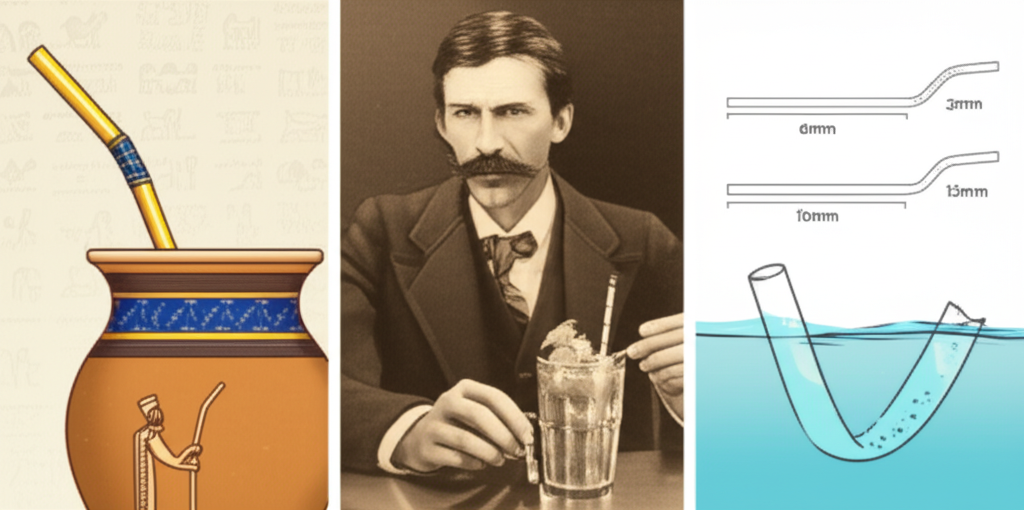
The pervasive use of single-use plastic straws exploded into a major environmental crisis in the late 2010s. Viral videos, such as one depicting a plastic straw being removed from a sea turtle’s nostril, galvanized public opinion and ignited a global movement against plastic waste. These straws, often made from polypropylene, are not biodegradable and persist for hundreds of years, breaking down into harmful microplastics that permeate oceans, waterways, and even human food chains. It’s estimated that Americans alone used hundreds of millions of plastic straws daily before significant policy changes. This colossal waste footprint has triggered stringent regulatory responses, reshaping the hospitality and food & beverage industries across continents.
Navigating the Nuances of Straw Selection in a Regulated Market
The choice of drinking straw is no longer a trivial procurement decision; it is a strategic imperative. Understanding the spectrum of straw diameters is fundamental to optimizing both beverage enjoyment and operational efficiency. Each dimension serves a specific purpose, designed to enhance the customer experience while minimizing waste.
For delicate mixed drinks and stirring,cocktail strawstypically measure around 0.15 inches (3-4 mm) in diameter and 5-6 inches in length. Moving to the everyday, thestandard or jumbo straw, at approximately 0.24 inches (6 mm) in diameter and 7.75 to 8 inches long, remains the most common choice for water, soft drinks, and iced tea. This 6mm diameter is also a widely adopted standard for many reusable alternatives. As beverages thicken, so must the straw.Super jumbo and giant straws, ranging from 0.28 to 0.375 inches (7-10 mm), are engineered for milkshakes, smoothies, and slushies, providing adequate flow without collapse. Specialized drinks like bubble tea or thick iced coffees demand even wider solutions;smoothie and boba strawstypically range from 0.39 to 0.51 inches (10-13 mm) in diameter, accommodating tapioca pearls and other toppings. The largest,colossal straws, can reach up to 0.47 inches (12 mm), perfect for extra-thick concoctions. A notable industry shift occurred around 1988, when fast-food restaurants started adopting wider plastic straws, reportedly to accommodate thicker milkshakes, eventually standardizing on larger diameters for all drinks to simplify inventory.
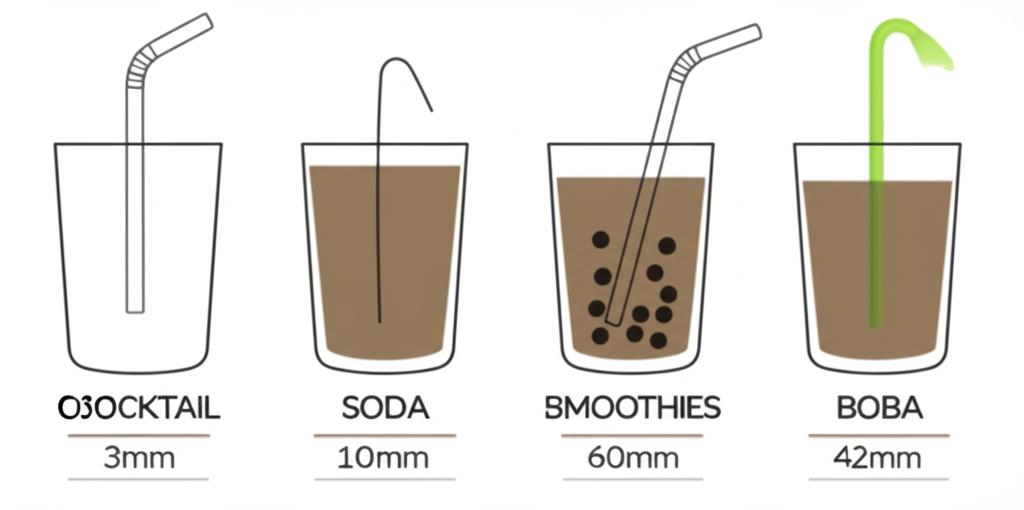
Beyond diameter, the material debate presents a more intricate challenge for businesses. The durability and low cost of plastic straws once made them an undeniable economic choice, but their environmental reckoning has fundamentally altered this calculus. Regulatory landscapes, particularly in Europe and the United States, have shifted dramatically. TheEuropean Union banned single-use plastic straws as of July 2021, forcing businesses to adopt alternatives. Similarly, California enacted a statewide law in 2019, restricting restaurants from providing plastic straws unless specifically requested. These legislative actions underscore a global movement toward reducing single-use plastics, placing significant compliance risks and reputational pressures on businesses that lag in adaptation.
However, the transition to alternatives is not without its own complexities and controversies. A critical aspect often overlooked is accessibility. Many individuals with disabilities rely on the unique flexibility and sturdiness of plastic straws to drink safely and independently. Alternative materials frequently fall short: paper straws can become soggy or are easily bitten through, while reusable options like metal can conduct heat or cold and pose injury risks or cleaning challenges. This necessitates a careful balance between environmental goals and ensuring inclusivity. Furthermore, the environmental benefits of certain alternatives are under scrutiny. While paper straws aim to be a green solution, concerns persist about their propensity for sogginess, their potential to contain “forever chemicals” (PFAS), and their actual environmental footprint, with some studies even suggesting that certain paper and bioplastic alternatives can, in some metrics, have a higher environmental impact during manufacturing or decomposition than traditional plastic. The ongoing debate highlights the need for a nuanced approach to sustainable procurement, moving beyond simple material swaps to a holistic evaluation of a product’s entire lifecycle.

Strategic Solutions for Sustainable & Efficient Operations
For businesses navigating this complex landscape, the path forward involves strategic optimization, careful evaluation of alternatives, and a forward-looking perspective on industry innovation. Optimizing your straw inventory starts with a diameter-based approach tailored to your menu offerings. By precisely matching straw diameters to the viscosity and contents of your beverages – for example, using slender options for cocktails and wider ones for smoothies – you enhance customer satisfaction and minimize waste from ill-suited products. This precision also translates into cost savings by reducing the need to stock a wide array of generic sizes and aligning procurement with actual usage. Furthermore, the selection of eco-conscious or premium straw choices can significantly enhance brand alignment, signaling a commitment to sustainability that resonates with an increasingly aware consumer base. To explore broader strategies for reducing your environmental footprint, consider reading our insights onNachhaltige Verpackungslösungen.
Evaluating Sustainable Straw Alternatives for B2B Use
| Besonderheit | B2B Impact | Compliance Risk | ROI -Potenzial |
|---|---|---|---|
| Plastic (Legacy) | Low initial cost, high durability, widespread availability, operational ease. | Sehr hoch(bans, fines, reputational damage). | Negative (long-term environmental clean-up, brand erosion). |
| Improved Paper | Moderate cost, enhanced durability (less sogginess, PFAS-free options), good customer acceptance. | Low to Moderate (dependent on regional regulations & specific certifications). | Moderate (customer goodwill, regulatory compliance, potential for higher price point). |
| Plant-Based Bioplastics (PLA, PHA, Sugarcane, Rice, Pasta, Agave) | Moderate-High cost, good mimicry of plastic feel, varied biodegradability/compostability. | Low (if certified compostable/biodegradable), requires appropriate waste infrastructure. | Moderate (sustainability positioning, niche market appeal). |
| Reusable (Stainless Steel, Glass, Bamboo, Silicone) | High upfront cost, very high longevity, requires cleaning/sanitation infrastructure, potential for theft/loss. | Very Low (zero-waste solution). | High (long-term cost savings, strong sustainability message, premium brand image). |
| Essbare Strohhalme | High cost, zero-waste solution, novelty factor, limited shelf-life. | Very Low (zero-waste). | Moderate-High (unique selling proposition, strong environmental message, potential for premium pricing). |
Beyond individual straw types, leading companies are demonstrating how strategic transitions can drive significant business value. Starbucks, for instance, committed to phasing out single-use plastic straws globally, replacing them with strawless lids and alternative materials, showcasing a proactive approach to evolving consumer and regulatory demands. Similarly, hospitality giants like Hyatt Hotels and Royal Caribbean International have announced plans to reduce or eliminate single-use plastic straws, understanding that environmental responsibility is a key differentiator in today’s market. These examples highlight a broader industry shift where sustainability initiatives are not just about compliance, but about enhancing brand value and meeting customer expectations. For more insights into streamlining your supply chain for these new product categories, refer to our article onOptimizing Supply Chain for Eco-Friendly Products.
Looking ahead, the eco-friendly straw market is poised for significant growth, signaling clear investment opportunities for businesses committed to the future. Projections indicate the global market for eco-friendly straws could reach approximatelyUSD 19.36 billion by 2029 and USD 25.1 billion by 2035, with North America emerging as a leading region due to strong environmental awareness and regulatory frameworks.

Future developments will focus heavily on technological innovations. Manufacturers are actively working on stronger, less soggy, and PFAS-free paper straws, often integrating water-based coatings for improved durability and recyclability. The realm of plant-based bioplastics is expanding with advanced materials like PHA and sugarcane, offering biodegradable and compostable options that closely mimic the tactile feel of traditional plastic. Edible straws, crafted from rice, pasta, seaweed, or fruit fibers, offer a truly zero-waste solution, potentially becoming a mainstream novelty. Beyond materials, the industry is also exploring “smart straws” with functionalities like health tracking or integrated beverage temperature sensors. Manufacturing and supply chain efficiency will be critical, with high-speed machinery, automation, and AI being deployed to optimize the production and distribution of these sustainable alternatives. This focus aims to address current performance gaps such as sogginess, altered taste profiles, and the cost disparity between sustainable options and legacy plastic. Ultimately, the shift in the drinking straw industry is part of a larger, undeniable mandate towards reducing reliance on all single-use plastics and fostering a more sustainable, eco-conscious industrial ecosystem.
Charting Your Path to a Responsible Straw Program
The transition to a fully optimized and sustainable straw program requires a methodical approach, starting with a comprehensive internal straw audit. This audit should assess current usage patterns, analyze waste streams, and gather customer feedback to identify specific needs and pain points. Following this, developing a phased transition plan allows for the strategic integration of sustainable straw options, minimizing disruption while maximizing impact. This might involve piloting new materials in specific segments of your operations before a full rollout. Partnering with innovative suppliers becomes paramount in this phase, ensuring access to advanced, compliant, and cost-effective solutions that meet your business’s unique demands. Finally, clear and consistent communication is key. Educating your staff and customers about your commitment to sustainability and the benefits of your chosen alternatives not only reinforces your brand values but also fosters transparency and builds trust. For strategies to enhance overall guest satisfaction during these transitions, our article onCustomer Experience in F&B Innovationoffers valuable insights.
Don’t let outdated straw choices hinder your progress. Take decisive action now to align your operations with global sustainability standards, mitigate regulatory risks, and elevate your brand’s reputation. By leveraging innovative, diameter-optimized straw solutions, businesses can unlock significant cost savings through reduced waste, enhance customer satisfaction, and secure a competitive edge in a rapidly evolving market, tapping into the estimatedUSD 25.1 billion eco-friendly straw market opportunity by 2035. Explore industry-leading products and expert resources today to chart your course toward a more responsible and profitable future.
Häufig gestellte Fragen
Why is drinking straw diameter important for businesses?
The diameter of a drinking straw significantly impacts customer experience, operational efficiency, and waste management. Choosing the correct diameter for specific beverages (e.g., narrow for cocktails, wide for smoothies) enhances customer satisfaction, prevents clogging or collapse, and reduces the likelihood of product waste due to improper usage. It’s a strategic decision affecting both customer perception and cost efficiency.
What are the key regulations impacting single-use plastic straws in Europe and the US?
In Europe, the European Union banned single-use plastic straws as of July 2021. In the United States, states like California enacted laws in 2019 restricting restaurants from providing plastic straws unless specifically requested by the customer. These regulations mandate a shift towards sustainable alternatives and carry compliance risks for businesses that do not adapt.
What are the main sustainable alternatives to plastic straws and their trade-offs?
Key alternatives include improved paper straws (less soggy, PFAS-free options), plant-based bioplastics (PLA, PHA, sugarcane, rice, pasta – offering biodegradability/compostability), reusable options (stainless steel, glass, bamboo, silicone – durable but require cleaning), and edible straws (zero-waste but with taste/shelf-life considerations). Each alternative has different costs, durability, environmental impacts, and suitability for various beverages, requiring businesses to weigh these factors against their operational needs and brand values.
How can businesses balance sustainability goals with accessibility needs for straws?
Balancing sustainability with accessibility requires a nuanced approach. While plastic straws are problematic environmentally, their flexibility and sturdiness are crucial for many individuals with disabilities. Businesses can adopt a “straws upon request” policy, offering a range of alternatives (including perhaps a small stock of specific, durable plastic straws for those who genuinely need them, while phasing out general plastic use), and investing in the development or procurement of truly accessible and sustainable alternatives that meet diverse needs.
What are the market growth projections for eco-friendly straws?
The global market for eco-friendly straws is experiencing rapid growth, projected to reach approximately USD 19.36 billion by 2029 and USD 25.1 billion by 2035. This growth is driven by increasing environmental awareness, consumer demand for sustainable products, and stringent government regulations against single-use plastics, particularly in regions like North America.


